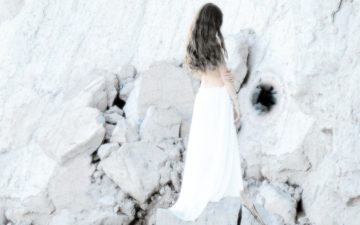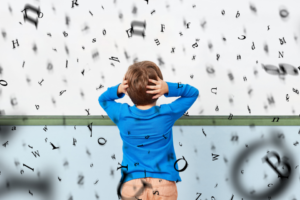
Down the Rabbit Hole: How One Book Can Inspire a Journey
 I know young (and no-so-young) people who have read the Harry Potter series multiple times and who will, most likely, read it again perhaps more than once. This series is one that has touched the hearts and minds of readers everywhere. What’s great about books like this is that they often open the door to many other works. The Spiderwick Chronicles, for instance, a natural follow-up read for Potter enthusiasts, is a series that centers around three young siblings and the fantastical things they find when their family moves into the Spiderwick Estate. From this adventure, young readers may go on to discover classics in the genre like C.S. Lewis’ The Chronicles of Narnia, another series that readers the world over treasure, or Madeline L’Engle’s A Wrinkle in Time, in which a young girl embarks on a spiritual and surreal journey to locate her scientist father who is lost in the space-time continuum. The idea is that, rather than reading a book because you have to and calling it a day, young people can allow one work to lead to another and so on. After following along with Meg Murray’s amazing adventure in L’Engle’s classic, you might be thinking about space or time travel, which could lead you to the sci-fi master Ray Bradbury’s Martian Chronicles or the hilarious Hitchhiker’s Guide to the Galaxy by Douglas Adams, which follows the misadventures of Earth’s last surviving man, Arthur Dent, who hitchhikes his way onto a spacecraft and adventure ensues, to put it mildly. If you’ve ever read one Wikipedia article which has led you “down the rabbit hole” to a hundred other tangentially-related articles, you’ll understand this concept of one door opening another opening another.
I know young (and no-so-young) people who have read the Harry Potter series multiple times and who will, most likely, read it again perhaps more than once. This series is one that has touched the hearts and minds of readers everywhere. What’s great about books like this is that they often open the door to many other works. The Spiderwick Chronicles, for instance, a natural follow-up read for Potter enthusiasts, is a series that centers around three young siblings and the fantastical things they find when their family moves into the Spiderwick Estate. From this adventure, young readers may go on to discover classics in the genre like C.S. Lewis’ The Chronicles of Narnia, another series that readers the world over treasure, or Madeline L’Engle’s A Wrinkle in Time, in which a young girl embarks on a spiritual and surreal journey to locate her scientist father who is lost in the space-time continuum. The idea is that, rather than reading a book because you have to and calling it a day, young people can allow one work to lead to another and so on. After following along with Meg Murray’s amazing adventure in L’Engle’s classic, you might be thinking about space or time travel, which could lead you to the sci-fi master Ray Bradbury’s Martian Chronicles or the hilarious Hitchhiker’s Guide to the Galaxy by Douglas Adams, which follows the misadventures of Earth’s last surviving man, Arthur Dent, who hitchhikes his way onto a spacecraft and adventure ensues, to put it mildly. If you’ve ever read one Wikipedia article which has led you “down the rabbit hole” to a hundred other tangentially-related articles, you’ll understand this concept of one door opening another opening another.
This example applies to much more than just fantasy books. Allow me to use myself as an example: when I was in high school, I read the baseball novel Bang the Drum Slowly, a story about a young pitcher who forms an indelible bond with a terminally ill catcher, as an independent reading assignment. From there, I went on to devour a veritable library of baseball books, which eventually led me to different sports and different books, like The Courting of Marcus Dupree by Willie Morris, a non-fiction epic about a highly-recruited college football player from Philadelphia, Mississippi, a place which also happened to be a hotbed of racial tension at the time. I’m not even a football fan, but from reading this book, I got much more than the story of an incredible athlete; I got an intense social history of the American south. And all this came from reading one random baseball novel back in high school, which I probably picked because it wasn’t that long, to be honest. When I became interested in psychology years later, I found Fear Strikes Out by ex-major leaguer Jimmy Piersall, which chronicles a young player’s very public struggle with mental illness. Incredibly, books that are ostensibly about one topic, such as baseball or football, often wind up being about something much deeper, such as racism or schizophrenia. And it all starts with one read that opens up a lifelong series of doors.
From sports, I moved to politics, a topic that I had never had much interest in until I “had” to read All the King’s Men in school. From Robert Penn Warren’s story of Willie Stark, a well-meaning lawyer who becomes besieged by his own greed, sprung an interest in real-life political stories, and I read old stuff like Woodward and Bernstein’s classic Nixon saga All the President’s Men and newer stuff like Gore Vidal’s scathing essay collection on early 2000’s politics, Imperial America and Hunter S. Thompson’s Kingdom of Fear, which then led me back in time to his Fear and Loathing on the Campaign Trail ’72 (Richard Nixon was apparently easy to write about.) Along the way, I picked up Kurt Vonnegut, typically recognized for his one “school book,” Slaughterhouse-Five, and read A Man Without a Country which took a harsh view of the George W. Bush years and led me back to nonfiction and former Whitehouse insider Richard A. Clarke, who worked in the Reagan, Clinton and Bush administrations, and his account of the post 9/11 U.S. response to terrorism, Against All Enemies. The rabbit hole can lead in many different directions and can even start with a required read in high school, leading to a joyride through books of all eras and genres. It occurs to me now that even the few Shakespeare plays that I actually liked back in my student days often had to do with abuse of power: enter Macbeth and Hamlet. There’s that rabbit hole again.
From early in a reader’s life, doors begin to open every time the cover of a book is opened and the first page turned. I have a friend who loved Treasure Island as a kid and he now owns a boat that he spends his summers on. There are probably people working for NASA who loved Ray Bradbury’s amazing tales of outer space or veterinarians who grew up reading James Herriot’s famous tales of his own pastoral veterinary career in books like All Creatures Great and Small. I would be remiss, of course, if I continued to use the phrase “down the rabbit hole” throughout this post without mentioning Lewis Carroll’s Alice’s Adventures in Wonderland, which…well, you should just read. So, while your journey down the “reading rabbit hole” may not be as surreal as Alice’s, by being an active receiver when you read and allowing one book to lead to the next, you forge a lifelong and life-giving relationship with books and reading.
Links for titles mentioned in this post:
A Hitchhiker’s Guide to the Galaxy
Kingdom of Fear/Fear and Loathing on the Campaign Trail
Alice’s Adventures in Wonderland
Written by Phil Lane
Contact us today to learn more about how our tutors can help your child improve their reading skills!



